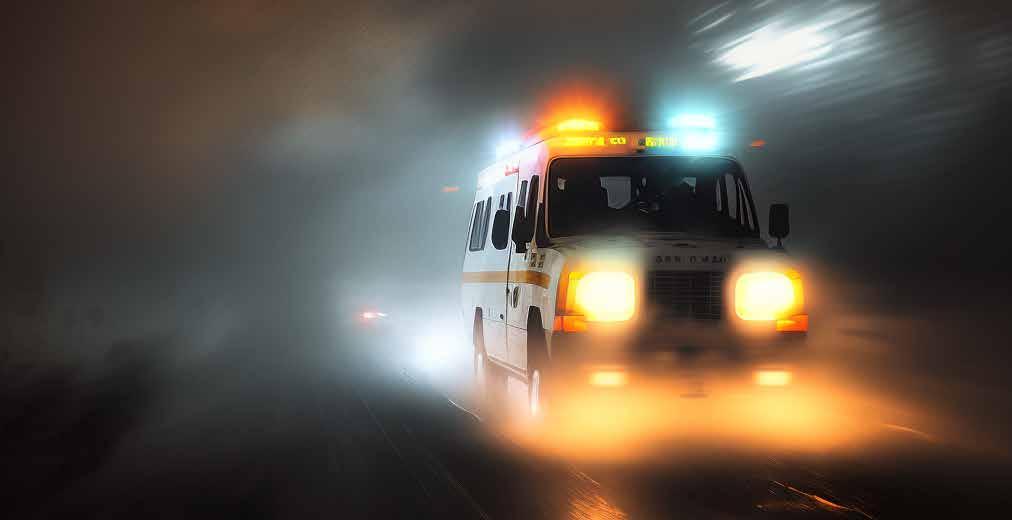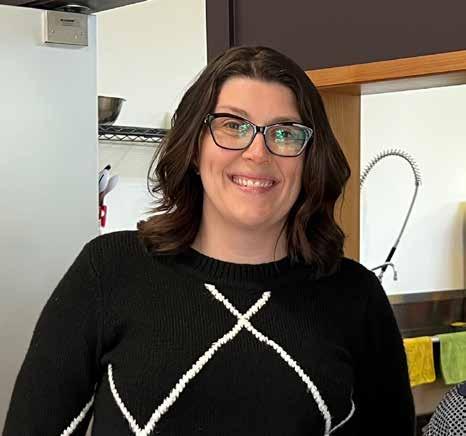
5 minute read
KNOW HOW TO STOP PEOPLE DYING FROM DRUG TOXICITY, CAN YOU PLEASE LISTEN?’
A statement from BC Minister of Mental Heath and Addictions Jennifer Whiteside released in mid-April noted the provincial government is working to expand supports and programs to deliver integrated mental-health and addiction services with $1 Billion in targeted investments. However, the announcement did not expand on what that could mean for smaller communities like Revelstoke. Currently, Revelstoke has only one substance use counsellor who sees people free of charge through adult mental health at Queen Victoria Hospital.
“One person for a population of 8,500 feels inadequate,” said MacLachlan. Add on to that the fact that facilities for people to address their substance use are all out of town, often with lengthy waitlists unless folks can pay for faster access, and the problem begins to feel insurmountable.
“If there’s only one person [in Revelstoke] that provides free support, and only a few facilities that you can access that are free to be able to get support related to your substance use, and the rest are at a fee, but your substance use is maybe related to the fact you have no money and everything in your life is falling apart, I’m not really sure how you would get to the support you need,” said MacLachlan.
“We don’t have drug testing in Revelstoke, we don’t have a safe injection site, we still have people dying from toxic drugs, but that doesn’t mean I’m just going to say, ‘too bad, we don’t have anything.’ I’m going to keep talking about it.”
How a safe supply and a shift in attitudes about what a drug user looks like could help reduce harm
By Melissa Jameson.
The number of deaths related to a toxic supply of illicit drugs in British Columbia continues to climb, with nearly 600 lives lost in the first three months of 2023. Here in Revelstoke, 13 people have lost their lives due to poisoned drugs since 2020. Two of those deaths occurred within the first few months of 2023.
While the number of deaths due to poisoned drugs in Revelstoke is small when compared to larger urban centres, Erin MacLachlan, co-director of community outreach and development at Community Connections believes the deaths could have been prevented.
“I get it, we’re not Vancouver. This isn’t seven deaths a day, but I also think all of this is preventable and that’s what makes it really frustrating and heart-breaking,” MacLachlan said, while noting that deaths from drug toxicity have surpassed deaths from COVID-19. “We didn’t know what COVID was, we didn’t know how to manage that virus. We had to learn, and we figured it out. It’s been many years of people saying, ‘We know how to stop people dying from drug toxicity, can you please listen?’ Really it’s about safe supply and having the ability to test what you’re ingesting.”
During our 30-minute conversation for this story, Erin and I spoke about everything from the harm caused by stereotypes of what an illicit drug user looks like to defining terms like ‘harm-reduction’ and ‘safe-supply’, and what services and supports are currently available in Revelstoke. Some of the answers have been edited for length and clarity.
Melissa Jameson: In what way do existing attitudes and stereotypes about what a drug user looks like prevent people from seeking services, or make it difficult for organizations providing supports for those who use illicit substances?
Erin McLachlan: I would love for that stigma to disappear. I would love for the focus to not be on who’s good or bad, and instead be on how do we keep people safe. I’m not telling people that they should be using more drugs. I’m not promoting drug use. I’m not condemning drug use. None of that is in my interest and it’s not in the interest of public health in general. Most of [Community Connection’s] harm reduction work is in collaboration with Interior Health. This is about public safety and public health. We’re not here to judge, we’re just here to inform and provide the tools and information that might help you live your life a little safer.
MJ: There’s multiple definitions of harm reduction and safe supply. How does Community Connections define those terms?
EM: Harm reduction, safe supply, drug testing, safe injection site – all these terms get thrown around in the media and it’s difficult for people to parse out what that means. Harm reduction is an umbrella term, it encompasses all the things that people do to help people stay safe when they’re using substances. Harm reduction includes clean needles, drug testing, safe supply. Safe supply is substances that have been regulated in their production. So, one method for people that are using opioids [to be able to use] in a safer environment is to have a daily supply of methadone, which is a sort of fake opioid. Those are all part of harm reduction.
[Revelstoke] does not have a safe injection site, [Community Connections is] not a safe injection site – that is a place where people can bring their substances, inject their substances, and be monitored to ensure that their substance use isn’t going to result in death. Most of those injection sites are in larger city centres. In collaboration with injection sites are often drug testing facilities. There’s lots of different types of drug testing, but the most accurate type of drug testing is often in an urban centre because they have access to a spectrometer which can properly test your substance for toxicity.

MJ: Are there any methods of drug testing available in Revelstoke?
EM: I have fentanyl test strips and we also can take a small sample of your substances and send it away, get it tested and get the results back. That is not helpful for people who are going to be using their substances right away.
MJ: It’s easy to ignore the humanity behind the statistics related to drug poisoning deaths. How would you explain to the broader community the importance of re-thinking their idea of what a typical substance user looks like?
EM: I think that again, that’s that hard perspective shift and that stigma around a drug user being somebody that’s a drain on the economy because they’re living on welfare and they’re taking time from social services and they’re taking time from paramedics and hospitals. All of that would stop if they had access and the ability to use safe substances and use in a safe environment. We can vilify people individually all the time, and we do it all the time […], but who does that perspective serve to vilify individuals?
To me that’s just an easy cop-out and a refusal to change a system. I would rather change a system and change our response than I would vilify individuals.
MJ: What services and supports currently exist and how can people access those services?
EM: I think the best thing to do is come to our community drop-in time. We coordinate our drop-in time with access to the food bank. We have injection kits, inhalation kits. In those kits are clean needles and clean pipes, and information on how to dispose of your drug paraphernalia and information on how to access any type of support you want in the community. Come here, because we know everybody – all the counsellors, Interior Health staff, all the types of support that exist. I think sometimes a barrier to people finding service is that they go to one person and ask for help, but maybe it’s not a good fit or the experience is off-putting, and they don’t go anywhere else. So, having that conversation with us can often open the doors to all the types of supports that are available and what might be the best fit for the current situation.
The Community Connections Outreach Building is located at 416 Second Street West. Drop-in hours are Mondays from 10 a.m.-1p.m., Wednesday’s from 3p.m. -6 p.m., and Friday’s from 10 a.m.-12p.m. Additional information on services and supports related to substance use and mental health can also be found by visiting revelstokelife.ca.










